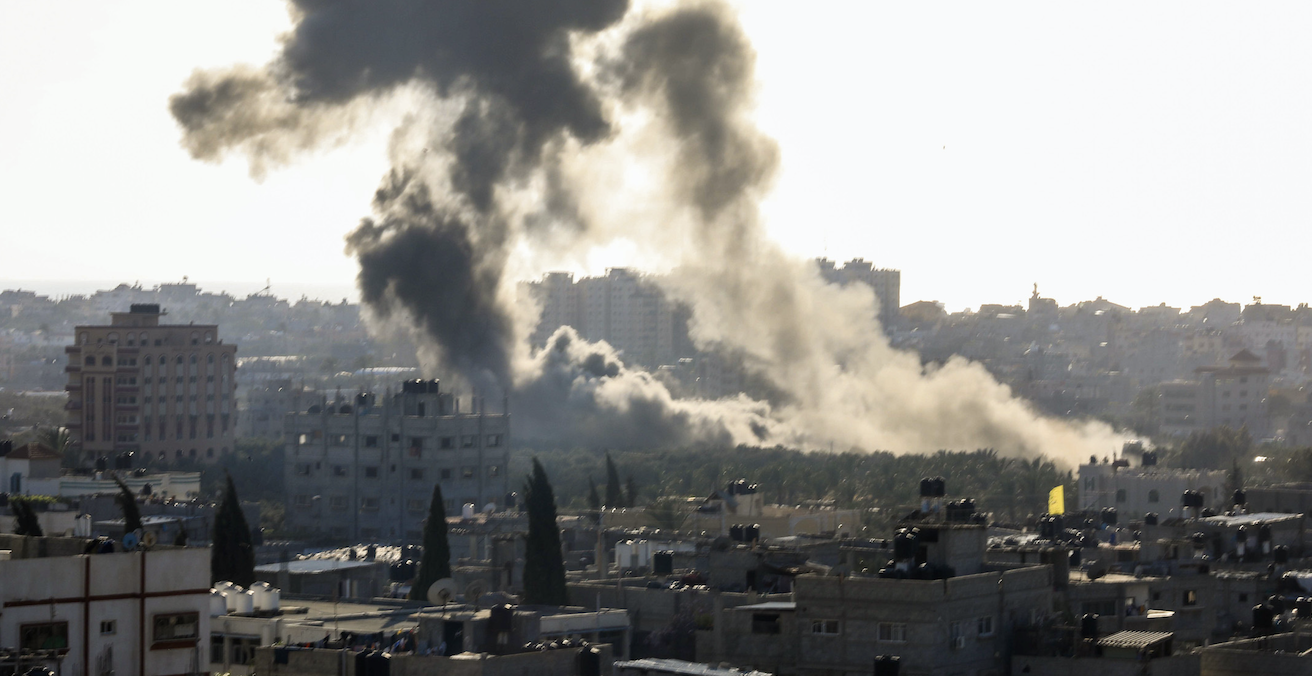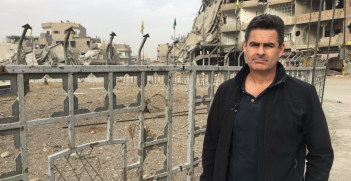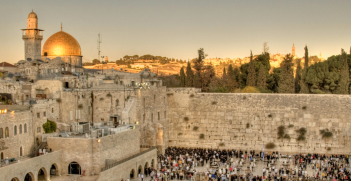The Latest Violence in Gaza is Nothing New

As 15 May marks the 71st anniversary of al-Nakba, it is worth reflecting on the latest violence in the Gaza Strip. Sadly, for the people who live there, it is just the most recent instalment in a perpetual cycle of suffering.
Over the past year, Israel and Hamas have engaged in relatively circumscribed but lethal bouts of violence every two months or so, comprising short-term exchanges of airstrikes and rockets until international mediators intercede to bring a halt to the violence. The latest violent exchange was the deadliest since the war in Gaza in 2014, killing 27 Palestinians and four Israelis. After such exchanges, inevitably, debate arises over the proximate causes of the violence, and who is to blame, with analysts often focusing on the immediate catalysts of the current round of fighting.
Arguments regarding the latest conflict rage around whether it was due to militants firing on Israeli soldiers or the murder of four Palestinian protestors on the same day. Palestinian popular protests – the Return Marches – have now been occurring every Friday for over a year. More than 6,000 unarmed protestors have been shot by Israeli snipers, with over 279 killed. In February, a UN Independent Commission into the 2018 Gaza protests found that there was “no justification for Israel to shoot protesters with live ammunition.”
The roots of the violence, however, long predate the ongoing conflict between Israel and Hamas.
May 15 marks the 71st anniversary of the Palestinian al-Nakba (The Catastrophe), mourning the ethnic cleansing of 750,000 Palestinians from their homeland by Zionist (later Israeli) forces in 1948. More than 400 villages were literally wiped off the map – both destroyed and their names replaced by Hebrew appellations.
Last week, the same conflict was celebrated by Israelis to mark Independence Day. It marked the unlikely success of the Zionist movement to occupy 78 percent of British Mandate Palestine, a movement aimed at creating a Jewish homeland in the face of anti-Semitism in Europe.
In 1967, Israeli forces engaged in a pre-emptive strike occupying the remaining 22 percent: East Jerusalem, the West Bank, the Gaza Strip (now known as the Occupied Palestinian Territories or OPTs). In doing so, they brought an additional one million Palestinians under the occupation of a self-defined “Jewish” state where they have remained since.
The diametrically opposed interpretations of these events form the crux of the Palestinian-Israeli conflict and the ongoing cyclical violence in Gaza. Indeed, 75 percent of Gaza’s population are refugees stemming from 1948.
Failure of the peace process and the rise of Hamas
A break down in long-term ceasefire talks between Hamas and Israel has also been blamed for the recent violence. Again, however, fruitless peace talks between Palestinians and Israel long predate the conflict between Israel and Hamas.
Official internationally supported negotiations began more than 25 years ago in 1993 when Israel and the Palestinian Liberation Organization (PLO) agreed to the Oslo peace process based on the formula of “land for peace.” The objective was to reach a two-state solution by 1999, with a Palestinian state on the 22 percent of Palestine occupied in 1967 and Israel on the 78 percent taken in 1948. The still-unfolding results of peace negotiations, however, have demonstrated that Israel wants both peace and land. Israel has repeatedly reneged on commitments and doubled the number of illegal settlers in the OPTs during the hey-day of the Oslo process from 1994-2000 alone.
In doing so, the Oslo process was increasingly instrumentalised by Israel and used as a tool to advance its security demands and increase settlements, in contravention of international law, to create immovable “facts on the ground.” This led to the collapse of the final settlement talks between Israel and the PLO in July 2000, which was followed by the eruption of the Palestinian Second Intifada (2000-2005) and the of killing more than 3,200 Palestinians and some 950 Israelis.
This development favoured Hamas’ project of armed resistance by which the Islamic organisation gained ground popularly vis-à-vis the failed project of peace negotiations led by its local rival, Fatah. Given the spiralling violence of the Second Intifada, Israel dismantled its settlements in Gaza for security reasons. This was perceived by 84 percent of Palestinians as a victory for armed resistance, starkly aiding Hamas to win a landslide in the legislative elections and ascend to office in 2006.
Hamas’ victory was perceived as a threat to Israel’s instrumentalisation of the Oslo process. Israel and the United States demanded that Hamas recognise Israel, abide by the Oslo parameters and renounce violence. Hamas’s refusal led to an increase in its popular support. At least, that is, before the real impacts of the subsequent embargo were felt by the population.
Israel and the United States imposed an economic siege on the Hamas government and supported the internecine war between Hamas and the Fatah-led Palestinian Authority to militarily overthrow it.
This culminated in a political split, with Fatah taking over the West Bank and Hamas ruling the Gaza Strip. The former accepted the status quo of Oslo and acted as Israel’s security contractor in the West Bank, while Hamas pursued an awkward combination of governance and armed resistance in Gaza. Since then, the deadliest confrontations in the history of this intractable conflict have occurred.
Compound strategies
Israel’s strategy since 2007 appears contradictory. On the one hand, it wants to continuously weaken Hamas’s military capacity and popularly demobilise Hamas through the siege. On the other hand, however, it wants to keep Hamas contained and weak in Gaza in order to sustain the Palestinian political split between Gaza and the West Bank and, therefore, end the prospect of a two-state solution. In doing so, Israel can highlight the status quo, complete with its creeping annexation of the West Bank – which Israeli Prime Minister Benyamin Netanyahu explicitly outlined during recent Israeli elections – as the only prospective solution, all of which might feature in the Trump administration’s so-called “deal of the century.”
Since 2007, Israel has waged three major wars and countless military operations in Gaza – exercises referred to as “mowing the grass” and which have killed thousands of Palestinians.
Israel has also imposed a severe economic blockade that has resulted, inter alia, in shortages of food, electricity and other basic necessities. The objective has been to weaken Hamas’ popularity and to encourage Gazans to revolt against the movement. Twelve years on, the policy has been a dismal failure with Hamas retaining support for its resistance program, even if there is local discontent with its rule.
All of which brings us to the recent rounds of violence. Since the start of the Return Marches over a year ago, quiet with Gaza has been periodically brought with limited humanitarian concessions – for example, allowing the flow of Qatari money to Hamas and temporarily extending the fishing zone off Gaza’s coast – the positive impacts of which soon evaporate along with Israeli promises to ease the blockade.
The open-air prison of refugees
Amid the ensuing calm, international attention wanders to whatever other crisis is dominating headlines, leaving Gaza forgotten to endure its interminable ongoing suffering. Forgotten and under pressure from other armed groups to maintain the resistance – notably Palestinian Islamic Jihad – and from the wider population to attain further concessions, Hamas’ home-made rockets inevitably fly as an unsubtle negotiating strategy. As projectiles fly back and forth across Gaza’s borders, international attention is re-engaged, Qatari cash materialises and, after a few days, calm returns to the south of Israel to grant Netanyahu a temporary reprieve – whether it be for elections, Independence Day or the Eurovision song contest – that is, until Gaza is once again forgotten and the process repeats itself.
The intermittent rounds of violence also act as a pressure valve for both Israel and Hamas, with the long-suffering people of Gaza caught in the middle. For Palestinians in Gaza, however, war and peace are illusory – the bombs may stop temporarily, but the occupation and de facto imprisonment remain.
Israel, moreover, has been accused of foot-dragging in terms of implementing a long-term ceasefire with Hamas, which some have termed an “armistice,” that has been slated since last year. Tangibly, the ceasefire envisions the monthly delivery of tens of millions in Qatari financial aid and the payment of public sector salaries in Gaza, subsidies for the poor and injured, a UN-sponsored work-for-cash program for 15,000 Gazans, the resumption of Qatari fuel shipments, the opening of border crossings to Gaza and the expansion of its fishing zones.
With this in mind, the rockets and marches are among a variety of tools, including forms of popular muqawama (resistance), Hamas utilises to exert pressure on Israel, with the aim of opening the borders and thereby allowing a sense of normalcy to return to Gaza.
Gaza’s suffering is not a natural occurrence – it is a calculated outcome of decades of Israeli policy within the context of a grossly asymmetrical political conflict. In brief, Gaza is actively and deliberately impoverished by cycles of violence and the siege, aided and abetted by international acquiesce. As a result, for years, the United Nations has warned that Gaza could be uninhabitable by 2020 – that is to say, in seven months.
Gaza’s crime is that it refuses to submit to its own imprisonment and continues to demand dignity 71 years later.
Dr Tristan Dunning is an adjunct research fellow and teaching instructor at the University of Queensland. He is the author of Hamas, Jihad and Popular Legitimacy: Reinterpreting Resistance in Palestine.
Dr Imad Alsoos is a research fellow at the Max Planck Institute for Social Anthropology. His research focuses on a comparative study of Hamas and an-Nahda’s forms of internal and external mobilisation.
This article is published under a Creative Commons License and may be republished with attribution.





